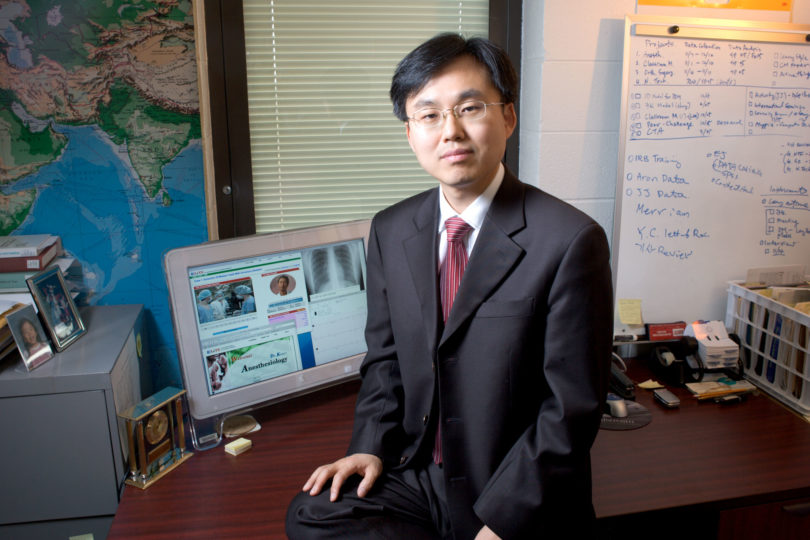Bridging the gap between classroom and real-world situations is a challenge university professors face every day.
Imagine reading about the basic procedure of performing surgery on a dog in your veterinary class and then going home, turning on your computer, going online and seeing exactly the same procedure you read about step for step.
UGA education researcher Ikseon Choi has spent the past 10 years of his life figuring out how to do just this.
His program, called Case-Based E-Learning, uses no new technology, just video and a Web site. But it’s how the technologies are used to overcome classroom barriers that earned Choi the 2005 Outstanding Practice Award from the Association of Educational Communications and Technology.
“Once one identifies what is missing in the classroom then it is possible to talk with practitioners and find the hidden knowledge applied in their everyday practice,” Choi says. “As a result, students will identify and learn the knowledge and skills they will need when faced with similar situations.”
Choi explains that students not only learn their lessons in class, but can relive the experience online—seeing, hearing and reading what it’s like to be in that situation. The program is designed to push students to think in multidimensional ways, rather than just memorizing and regurgitating information on a test for a grade.
“Every school at the university level could benefit from Case-Based E-Learning,” he says.
Indeed. The program has been implemented or is in development in a handful of classes across campus in the education, veterinary medicine, and agricultural and environmental sciences colleges.
“It has helped my students see an issue from multiple perspectives, explore various ways of actively problem solving by utilizing resources inside and outside of the school and developed their individual decision-making abilities,” says Kyunghwa Lee, an assistant professor in elementary and social studies education who has integrated Case-Based E-Learning into her classroom management class.
“The goal is to bring real-world problems into the classroom to improve the learning experience and critical thinking skills for students,” Choi says. “Every profession faces multifaceted problems that call for active thinkers and problem solvers.”
Prior to integrating Case-Based E-Learning into her class, Lee says she was struggling to find ways to encourage these future teachers to read literature essential to their profession.
“If a teacher teaches students without reading and building professional knowledge about teaching and learning, she is like a physician who practices without knowing how the human body and mind work,” says Lee, who collaborates with Choi on researching the project.
“The [e-learning] project is not about evaluating the professors; they are doing everything they can, given the limited resources that come with the college classroom setting,” Choi says. Rather, the project is about renovating the current classroom in a way to reach an ideal learning environment.
“I am not advocating replacing teachers with computers. That is not the utopian education system at all. But technology can be used to our advantage to prepare students more adequately for their profession by bringing the problem into the classroom,” he says.
Choi’s outstanding program award from the AECT acknowledged his Case-Based E-Learning for an anesthesiology class, which was recently implemented in a South Korean dental school.
Choi says that initially the project is more time consuming for teachers, because it’s an additional duty beyond their regular class discussion. But once the final product is implemented students become more intrigued with their subject and the entire teaching process becomes more effective.
“The time is worth it,” Lee says, “particularly among fields dealing with the link between theory and practice, ethical issues and dilemmas that don’t have one right answer.”








